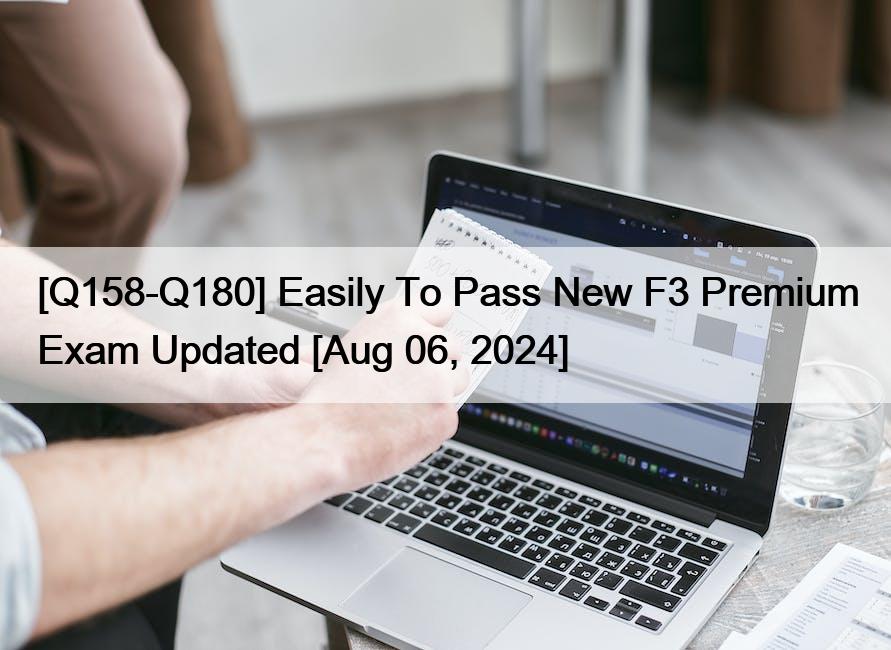[Q158-Q180] Easily To Pass New F3 Premium Exam Updated [Aug 06, 2024]
Easily To Pass New F3 Premium Exam Updated [Aug 06, 2024]
F3 Certification All-in-One Exam Guide Aug-2024
CIMA F3 exam covers a wide range of topics, including financial strategy, risk management, investment decisions, and financial performance evaluation. F3 exam is divided into two sections, with the first section testing candidates’ knowledge and understanding of financial strategy and the second section assessing their ability to apply this knowledge in a practical setting. F3 exam is computer-based and consists of 90 multiple-choice questions, with a time limit of two hours.
CIMAPRA19-F03-1 (F3 Financial Strategy) Exam covers a range of topics, including financial strategy formulation, risk management, investment decisions, and corporate finance. F3 exam requires candidates to have a strong understanding of financial analysis, financial markets, and corporate finance principles. It is a computer-based exam that is delivered in a secure testing environment and consists of multiple-choice questions. F3 exam is challenging, and candidates are required to have a high level of knowledge, analytical skills, and critical thinking ability to pass. Passing the CIMAPRA19-F03-1 (F3 Financial Strategy) Exam is a significant achievement and demonstrates a candidate’s readiness to take on key financial roles in their organization.
Last F3 practice test reviews: Practice Test CIMA dumps: https://www.premiumvcedump.com/CIMA/valid-F3-premium-vce-exam-dumps.html
